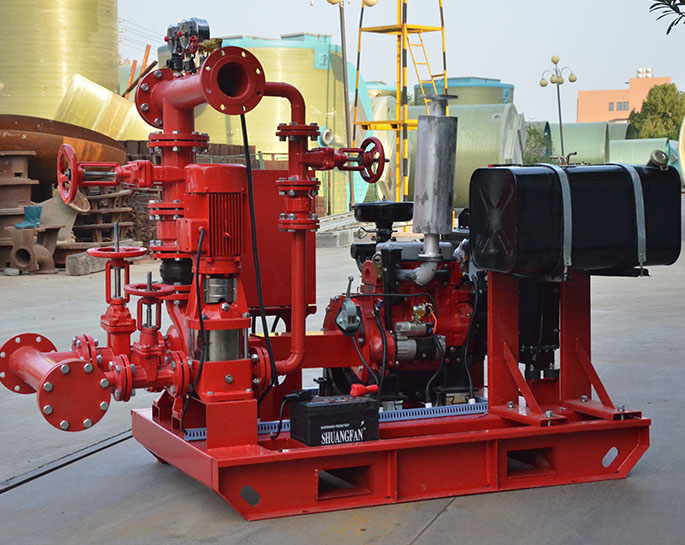What should be paid attention to when installing fire pumps?
When installing fire pumps, several important factors should be considered to ensure their proper installation and reliable operation. Here are some key points to pay attention to:
-
Compliance with Codes and Standards: Ensure that the fire pump installation complies with the relevant codes, standards, and regulations, such as those set by the National Fire Protection Association (NFPA) or local regulatory authorities. Familiarize yourself with the specific requirements applicable to the installation location.
-
Proper Location: Select an appropriate location for the fire pump installation. Consider factors such as accessibility for maintenance and repairs, adequate ventilation, and protection from environmental conditions (e.g., extreme temperatures, corrosive atmospheres).
-
Sufficient Space: Provide sufficient space around the fire pump for ease of maintenance and operation. Allow ample room for personnel to access the pump, valves, controls, and other components. Ensure that there is enough clearance for proper ventilation and cooling.
-
Foundation and Mounting: Install the fire pump on a stable and adequately designed foundation or baseplate. The foundation should be capable of supporting the weight of the pump and its components, minimizing vibration and ensuring proper alignment with the drive system (e.g., motor or engine).
-
Piping and Connections: Follow proper piping practices during installation to ensure efficient and reliable flow. Use suitable piping materials that are compatible with the pumped fluid, and ensure proper sizing, alignment, and support of the piping. Use appropriate fittings, valves, and connectors that comply with applicable codes and standards.
-
Alignment: Properly align the fire pump with the drive system (e.g., motor or engine) to minimize wear, vibration, and misalignment-related issues. Follow the manufacturer's recommended alignment procedures and use precision alignment tools, if necessary.
-
Electrical Connections: If the fire pump is electrically driven, ensure that the electrical connections comply with electrical codes and regulations. Properly size and protect the electrical conductors, use suitable wiring methods, and ensure proper grounding. Follow the manufacturer's instructions for electrical connections and consult a qualified electrician, if needed.
-
Commissioning and Testing: After installation, conduct a thorough commissioning process to verify the proper installation and functioning of the fire pump. Test the pump and associated components, including flow tests, pressure tests, and functional tests, to ensure they meet the required specifications and performance criteria.
-
Manufacturer Guidelines: Follow the specific installation instructions provided by the fire pump manufacturer. These guidelines often include detailed steps, recommendations, and best practices for installation, alignment, electrical connections, and other critical aspects.
-
Qualified Personnel: Ensure that the installation is performed by qualified personnel who have experience with fire pump installations and are familiar with the applicable codes and standards. Engage professionals, such as fire protection engineers or certified installers, as necessary to ensure proper installation.
It is essential to consult with fire protection professionals, system designers, and relevant authorities throughout the installation process to ensure compliance and adherence to best practices. Regular inspections, maintenance, and testing should also be conducted to ensure the continued reliability and performance of the fire pump system.


.png)
.png)

.png)


